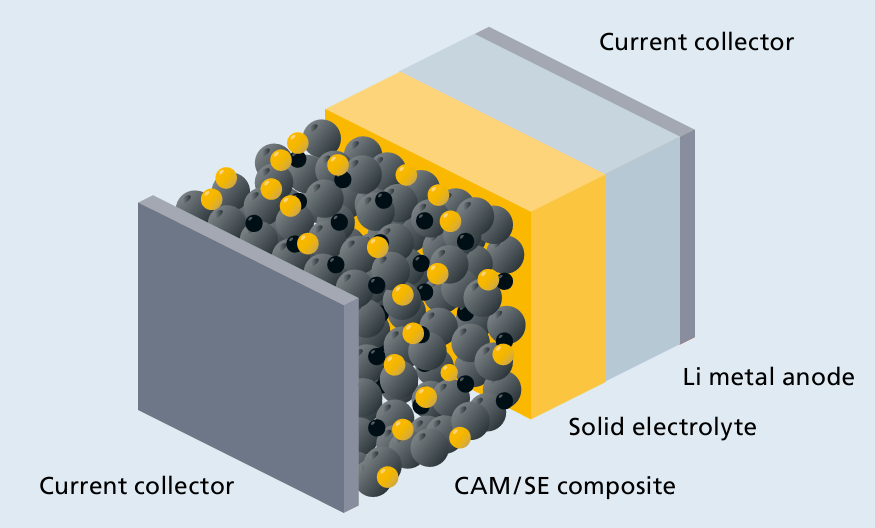EGP 18bn invested in women-led small, micro projects over 11 years: Rahmy – Dailynewsegypt

MSMEDA Report on Women’s Economic Empowerment and Sustainable Development Goal Alignment
Executive Summary
The Micro, Small and Medium Enterprise Development Agency (MSMEDA) has invested EGP 18 billion over 11 years to finance women-led enterprises, directly contributing to key Sustainable Development Goals (SDGs). This investment has facilitated the creation of approximately 1.2 million job opportunities, advancing SDG 8 (Decent Work and Economic Growth) and SDG 5 (Gender Equality). This report outlines MSMEDA’s strategic initiatives, alignment with the 2030 Agenda, and its commitment to fostering inclusive and sustainable economic development in Egypt.
Strategic Framework and SDG Integration
MSMEDA’s operations are guided by a comprehensive strategy aligned with national directives, Egypt’s Vision 2030, and the global Sustainable Development Agenda. The agency’s core mission is to ensure women have equitable access to financial and non-financial resources, thereby promoting inclusive growth and reducing inequalities (SDG 10).
Core Strategic Objectives
- Advancing Gender Equality (SDG 5): To systematically increase women’s participation across all economic sectors and enhance their leadership and professional capacities.
- Promoting Decent Work and Economic Growth (SDG 8): To stimulate job creation and support the formalization and growth of women-led Micro, Small, and Medium Enterprises (MSMEs).
- Fostering Innovation and Sustainable Industry (SDG 9): To empower women entrepreneurs through technology, digital transformation, and green business models.
- Strengthening Partnerships (SDG 17): To collaborate with government bodies, the private sector, and development partners to create an enabling ecosystem for women’s entrepreneurship.
Key Contributions to Sustainable Development Goals
SDG 5: Gender Equality
MSMEDA’s primary focus is the economic empowerment of women. The agency’s efforts directly support the targets of SDG 5 by:
- Injecting EGP 18 billion into women-led small and micro-enterprises across all governorates.
- Actively working to increase female representation in the labour market and in leadership roles.
- Coordinating with national initiatives to support women in launching and scaling their own businesses.
SDG 8: Decent Work and Economic Growth
The agency’s financing has been a significant driver of job creation and economic development, contributing to SDG 8 through:
- The creation of an estimated 1.2 million job opportunities via supported enterprises.
- Promoting entrepreneurship and self-employment as viable pathways to economic security.
- Assisting enterprises in their growth trajectory from micro to small and medium-sized operations.
SDG 9 & SDG 12: Innovation and Sustainable Production
MSMEDA is implementing an ambitious vision to align women’s entrepreneurship with modern, sustainable practices. This supports SDG 9 (Industry, Innovation, and Infrastructure) and SDG 12 (Responsible Consumption and Production) by:
- Supporting the adoption of artificial intelligence and digital transformation in women-led businesses.
- Encouraging and financing green entrepreneurship and environmentally valuable projects.
- Providing special attention to heritage, handicraft, and innovative projects that promote sustainable local economies.
Implementation and Future Outlook
Operational Mechanisms
MSMEDA’s strategy is operationalized through its nationwide branch network, offering a suite of services mandated under the MSME Development Law No. 152/2020. CEO Bassil Rahmy, speaking at the Carerha Summit for Egyptian Women 2024, urged female entrepreneurs to leverage these resources.
Available Services
- Financial Inclusion: Diverse financing products tailored for MSMEs.
- Capacity Building: Specialised training programmes in entrepreneurship and business management.
- Non-Financial Support: Technical assistance and guidance for project development.
MSMEDA reaffirms its commitment to collaborating with all partner organizations to advance the national agenda for women’s economic and social empowerment, ensuring their full participation in achieving the Sustainable Development Goals.
Analysis of Sustainable Development Goals (SDGs) in the Article
1. Which SDGs are addressed or connected to the issues highlighted in the article?
-
SDG 5: Gender Equality
- The article’s central theme is the economic and social empowerment of women. It details the efforts of the Micro, Small and Medium Enterprise Development Agency (MSMEDA) to specifically support “women-led small and micro enterprises.” The entire initiative is focused on increasing women’s economic participation, strengthening their leadership roles, and ensuring they have full access to financial and non-financial services, which are core objectives of SDG 5.
-
SDG 8: Decent Work and Economic Growth
- The article directly addresses this goal by highlighting job creation and support for entrepreneurship. It states that MSMEDA’s financing contributed to the “creation of at least 1.2 million job opportunities.” Furthermore, the agency’s strategy to “encourage them to pursue entrepreneurship and self-employment” and support the growth of “micro to small and medium-sized levels” enterprises is fundamental to fostering sustainable economic growth.
-
SDG 1: No Poverty
- By providing women with access to capital (“injected EGP 18bn”) and creating jobs, the initiative directly contributes to poverty reduction. Empowering women to establish businesses that deliver “economic, social, and environmental value” provides them with sustainable livelihoods, helping to lift them and their families out of poverty, which aligns with the goal of ensuring all people have equal rights to economic resources.
-
SDG 9: Industry, Innovation, and Infrastructure
- This goal is relevant through the focus on supporting small-scale enterprises and promoting innovation. The article mentions MSMEDA’s support for “innovative projects” and its vision to empower women by supporting their adoption of “artificial intelligence and digital transformation.” Increasing the access of small enterprises to financial services is a key component of this SDG.
-
SDG 10: Reduced Inequalities
- The program specifically targets women to reduce gender-based economic disparities. By aiming to “reach every Egyptian woman seeking to enter the labour market” and ensuring they have access to financial services, MSMEDA’s work directly promotes the economic inclusion of a group that often faces barriers, thereby contributing to the reduction of inequalities within the country.
2. What specific targets under those SDGs can be identified based on the article’s content?
-
Under SDG 5 (Gender Equality):
- Target 5.5: Ensure women’s full and effective participation and equal opportunities for leadership in economic life. The article supports this by mentioning efforts to “enhance their representation in the labour market, and strengthen their leadership and professional roles.”
- Target 5.a: Undertake reforms to give women equal rights to economic resources, as well as access to financial services. This is directly addressed by MSMEDA’s strategy to “ensure women have full access to MSMEDA’s financial and non-financial services” and provide “diverse financing products.”
- Target 5.b: Enhance the use of enabling technology to promote the empowerment of women. The article explicitly mentions an “ambitious vision to empower women by supporting their adoption of artificial intelligence and digital transformation” and promoting a “shift toward digital and technological solutions.”
-
Under SDG 8 (Decent Work and Economic Growth):
- Target 8.3: Promote development-oriented policies that support productive activities, decent job creation, entrepreneurship, and encourage the growth of micro-, small- and medium-sized enterprises, including through access to financial services. The entire article is an example of this target in action, detailing how MSMEDA finances and supports MSMEs to create jobs and foster entrepreneurship.
- Target 8.5: Achieve full and productive employment and decent work for all women and men. The creation of “at least 1.2 million job opportunities” is a direct contribution to this target.
- Target 8.10: Strengthen the capacity of domestic financial institutions to encourage and expand access to financial services for all. MSMEDA’s work to “promote financial inclusion” and provide financing to women entrepreneurs across all governorates exemplifies this target.
-
Under SDG 9 (Industry, Innovation, and Infrastructure):
- Target 9.3: Increase the access of small-scale industrial and other enterprises to financial services, including affordable credit. The injection of “EGP 18bn over the past 11 years to finance women-led small and micro enterprises” is a clear implementation of this target.
3. Are there any indicators mentioned or implied in the article that can be used to measure progress towards the identified targets?
-
Quantitative Indicators Mentioned:
- Total financing provided: The article states that “EGP 18bn” was injected over 11 years. This is a direct indicator of the financial resources allocated to women-led enterprises (relevant to Targets 5.a, 8.3, and 9.3).
- Number of jobs created: The article specifies the “creation of at least 1.2 million job opportunities.” This is a key performance indicator for measuring progress on decent work and economic growth (relevant to Target 8.5).
-
Qualitative and Implied Indicators:
- Number of women-led enterprises financed: While not giving a specific number, the article implies this is a key metric for MSMEDA. This would measure access to financial services (Target 5.a and 9.3).
- Increased participation of women in specific sectors: The goal to increase “women’s participation across productive, commercial, and service sectors” suggests that tracking this percentage would be an indicator of progress (Target 5.5).
- Number of women accessing training: The mention of “specialised entrepreneurship training programmes” implies that the number of participants is a metric for non-financial support (Target 8.3).
- Adoption of digital technologies by women-led businesses: The focus on “artificial intelligence and digital transformation” implies that the rate of technology adoption among supported enterprises is a measure of success (Target 5.b).
- Geographic reach of services: The aim to support women “across all governorates” and the call for women to visit “MSMEDA’s branches nationwide” indicate that the geographic distribution of beneficiaries is an important indicator of inclusive outreach (Target 10.2).
4. Summary Table of SDGs, Targets, and Indicators
| SDGs | Targets | Indicators Identified in the Article |
|---|---|---|
| SDG 5: Gender Equality |
5.5: Ensure women’s full participation and equal opportunities for leadership.
5.a: Give women equal rights to economic resources and access to financial services. 5.b: Enhance the use of enabling technology for women’s empowerment. |
– Increased representation of women in the labour market and leadership roles.
– Amount of financing provided to women-led enterprises (EGP 18bn). – Rate of adoption of AI and digital solutions by women-led enterprises. |
| SDG 8: Decent Work and Economic Growth |
8.3: Promote policies that support entrepreneurship and the growth of MSMEs.
8.5: Achieve full and productive employment and decent work for all. 8.10: Expand access to financial services for all. |
– Number of women-led MSMEs established and grown. – Number of women receiving entrepreneurship training. – Number of job opportunities created (at least 1.2 million). – Progress on financial inclusion among women across all governorates. |
| SDG 9: Industry, Innovation, and Infrastructure | 9.3: Increase the access of small-scale enterprises to financial services. |
– Total value of financing injected into small and micro enterprises (EGP 18bn). – Number of innovative, heritage, and handicraft projects financed. |
| SDG 10: Reduced Inequalities | 10.2: Empower and promote the social and economic inclusion of all. | – Geographic distribution of services to women across all governorates. |
Source: dailynewsegypt.com
What is Your Reaction?
 Like
0
Like
0
 Dislike
0
Dislike
0
 Love
0
Love
0
 Funny
0
Funny
0
 Angry
0
Angry
0
 Sad
0
Sad
0
 Wow
0
Wow
0


















































.jpg.webp?itok=0ZsAnae9#)





/environment-climate-change-and-health-(ech)/water-sanitation-hygiene-and-health-(wsh)/landfill-tuvalu-36092.tmb-1200v.jpg?sfvrsn=5c21fe40_1#)



















